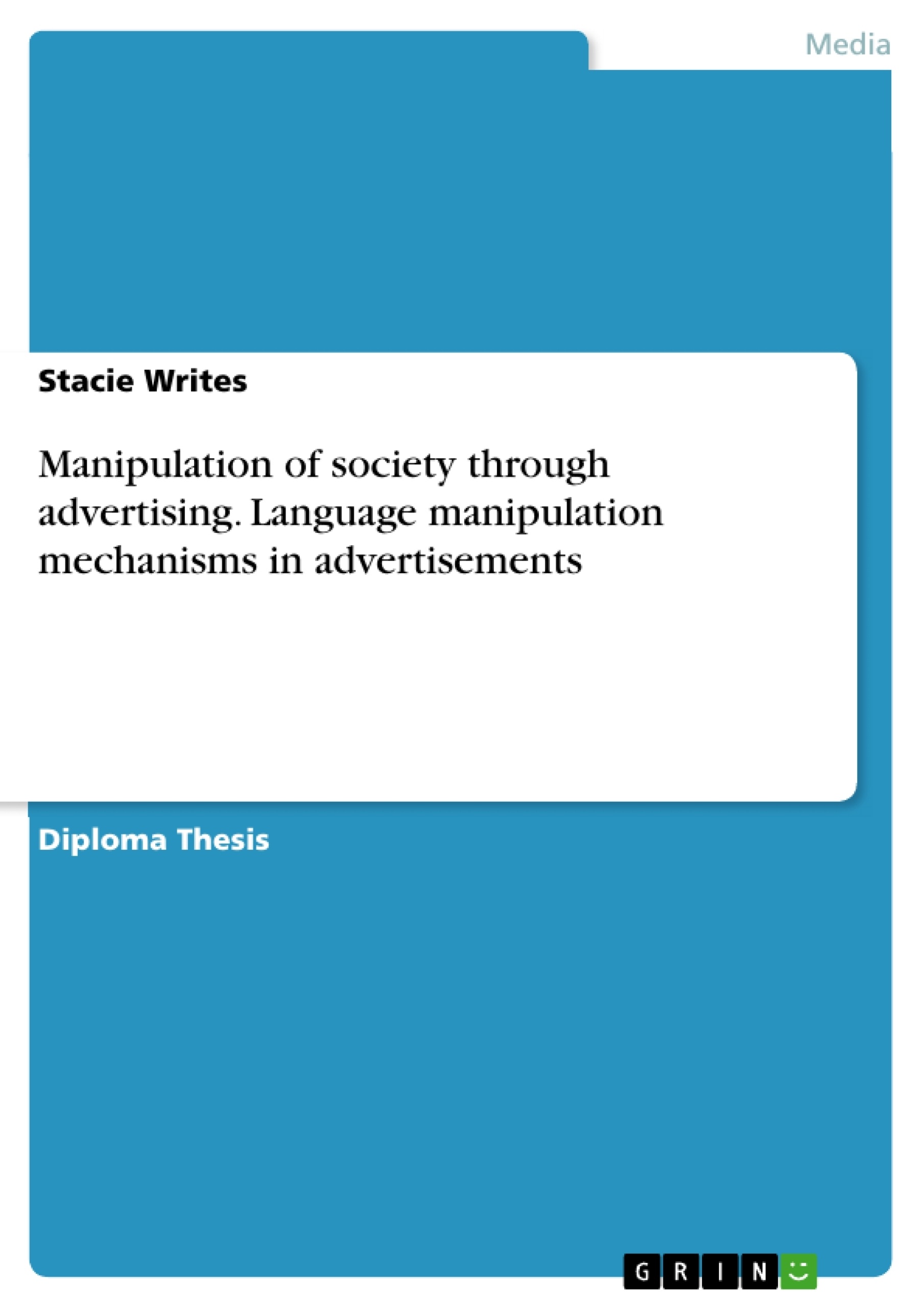The diploma paper is a research of the written advertising from the linguistic and translation perspective. The aim of this paper is to point out the language manipulation mechanisms and the strategies of advertising translation. The Paper has the following structure: the annotations in the English and Romanian languages, the introduction, two chapters: a theoretical and a practical one, each one containing a conclusion, the general conclusions, the bibliography made up from 12 consulted books, 4 articles and 8 internet resources, consulted sites and the appendix.
The paper presents the concept of manipulation through advertising, and namely the language manipulation mechanisms in advertisements, which are being presented by lexical features, which include weasel words and emotionally coloured words, by grammatical and syntactic features, which mostly relate to the way text is constructed and the intentional mistakes committed in advertising texts. We will see what the words that are frequently used in advertising are. The third aspect that represents language manipulation mechanisms is stylistic dimensions, which implies such stylistic devices as personification, metaphors, metonymy, synecdoche, puns, imperatives. We will find out to which stylistic devices, advertisers love to resort. Aside from this, we will discuss about translation strategies in advertising, which can be summarized to three main strategies: literal translation, free translation and idiomatic translations. We will also notice that the translation of advertising depends not only on cultural aspects. Many of authors that wrote about translation of advertising have different opinions upon how this topic should be approached. Based on the practical chapter we will try to find out what is more relevant and what wins over: to transmit the message accurately, or to create the effect.
Based on things mentioned above, we will analyse what aspects of advertising attract people, creating the positive effect and what turn them away.
All in all this diploma paper shows what vocabulary is used in advertising, what speech and how language is used in vocabulary. From the point of view of translation of advertising we will see whatever the foreign advertising prefer to translate the slogans word by word, or they prefer to make their own one, keeping only the general idea.
Table of Contents
- Introduction
- CHAPTER I GENERAL PERSPECTIVES ON ADVERTISING
- 1.1 Objectives and Functions of Advertising as Form of Communication
- 1.2 Language Manipulation Mechanisms in Advertisements
- 1.2.1 Lexical Features in Advertising Language
- 1.2.2 Grammatical and Syntactic features in Advertising Language
- 1.2.3 Stylistic Dimensions in Advertising Language.
- 1.3 Strategies of Translating Advertisements
- 1.4 Effects of Translated Advertising on Society
- CHAPTER II ANALYSIS OF ADVERTISEMENTS FROM A TRANSLATION PERSPECTIVE
- 2.1 Manipulation at the Lexical and Syntactic Level in Advertising
- 2.2 Figurative Language as an Instrument of Manipulating Society from a Translation Viewpoint
- 2.3 Difficulties of Translating Advertisements from English into Romanian
Objectives and Key Themes
This diploma paper investigates written advertising from a linguistic and translation perspective. It aims to highlight the language manipulation mechanisms and strategies used in advertising translation. The paper examines the concept of manipulation through advertising, focusing on the language mechanisms used in advertisements, including lexical features, grammatical and syntactic features, and stylistic dimensions.
- Language manipulation mechanisms in advertising
- Strategies of translating advertisements
- Effects of translated advertising on society
- Analysis of advertisements from a translation perspective
- Difficulties of translating advertisements from English into Romanian
Chapter Summaries
Chapter I delves into general perspectives on advertising, exploring its objectives and functions as a form of communication. It investigates the language manipulation mechanisms employed in advertisements, focusing on lexical features, grammatical and syntactic features, and stylistic dimensions. The chapter concludes by examining strategies for translating advertisements and their potential impact on society.
Chapter II analyzes advertisements from a translation perspective, examining manipulation at the lexical and syntactic levels. It explores figurative language as an instrument of manipulation and delves into the challenges of translating advertisements from English into Romanian.
Keywords
The main keywords and focus topics of this paper are: advertisement, manipulation, society, translation, adaptation, slogan, speech, stylistic dimensions, stylistic devices, advertising translation techniques, weasel words.
- Quote paper
- Stacie Writes (Author), 2014, Manipulation of society through advertising. Language manipulation mechanisms in advertisements, Munich, GRIN Verlag, https://www.grin.com/document/333839




